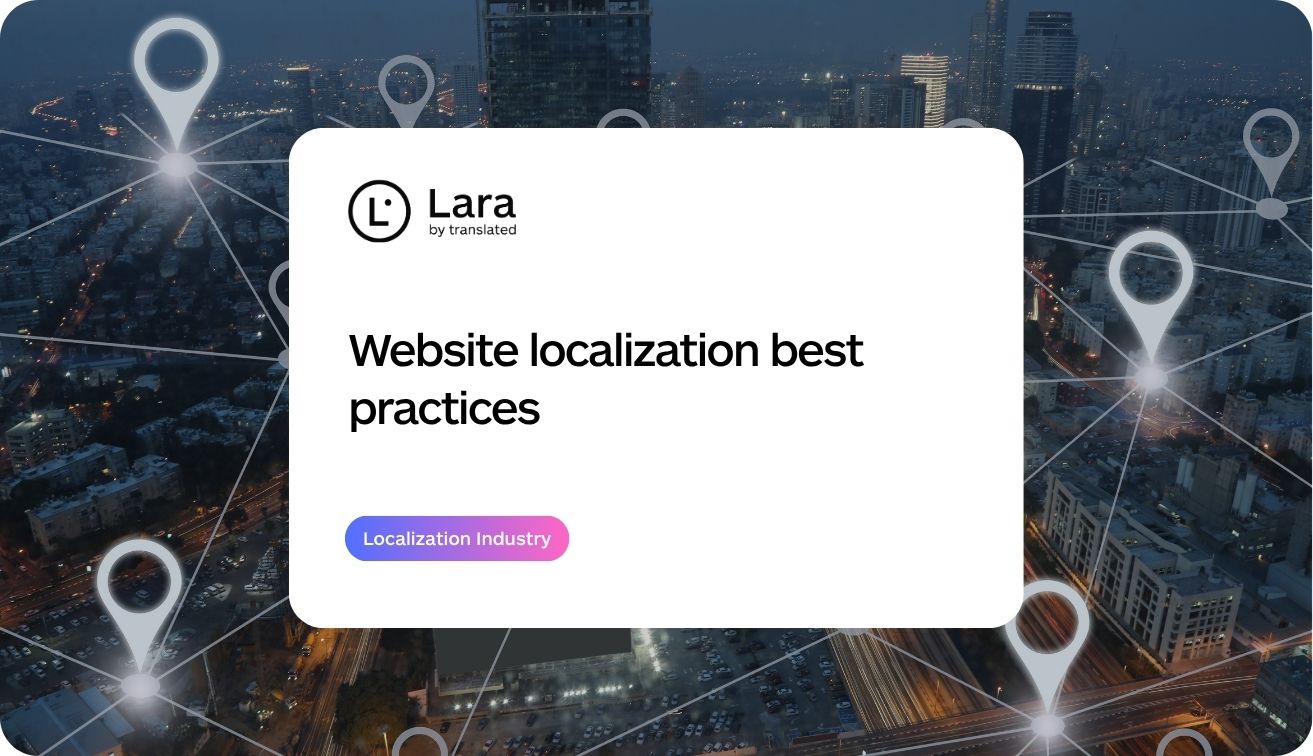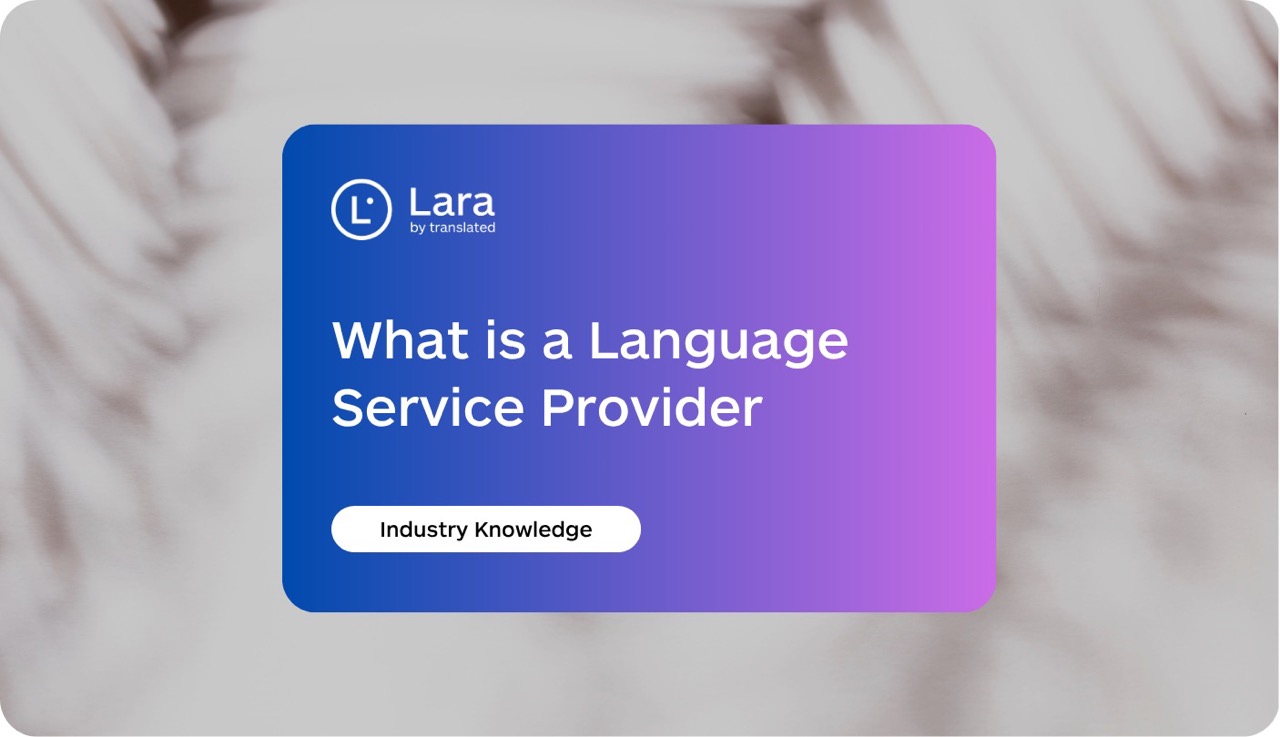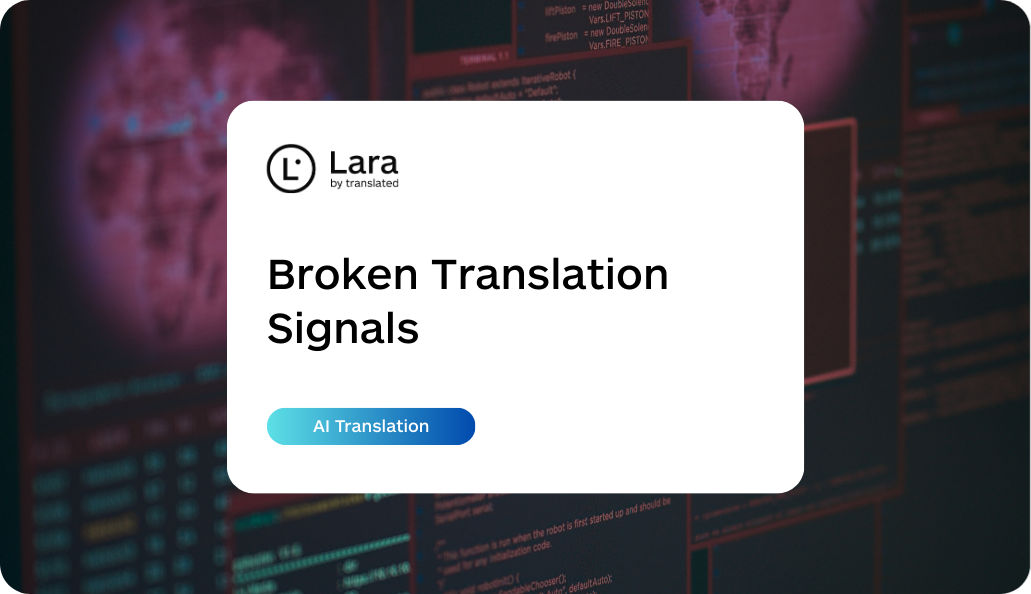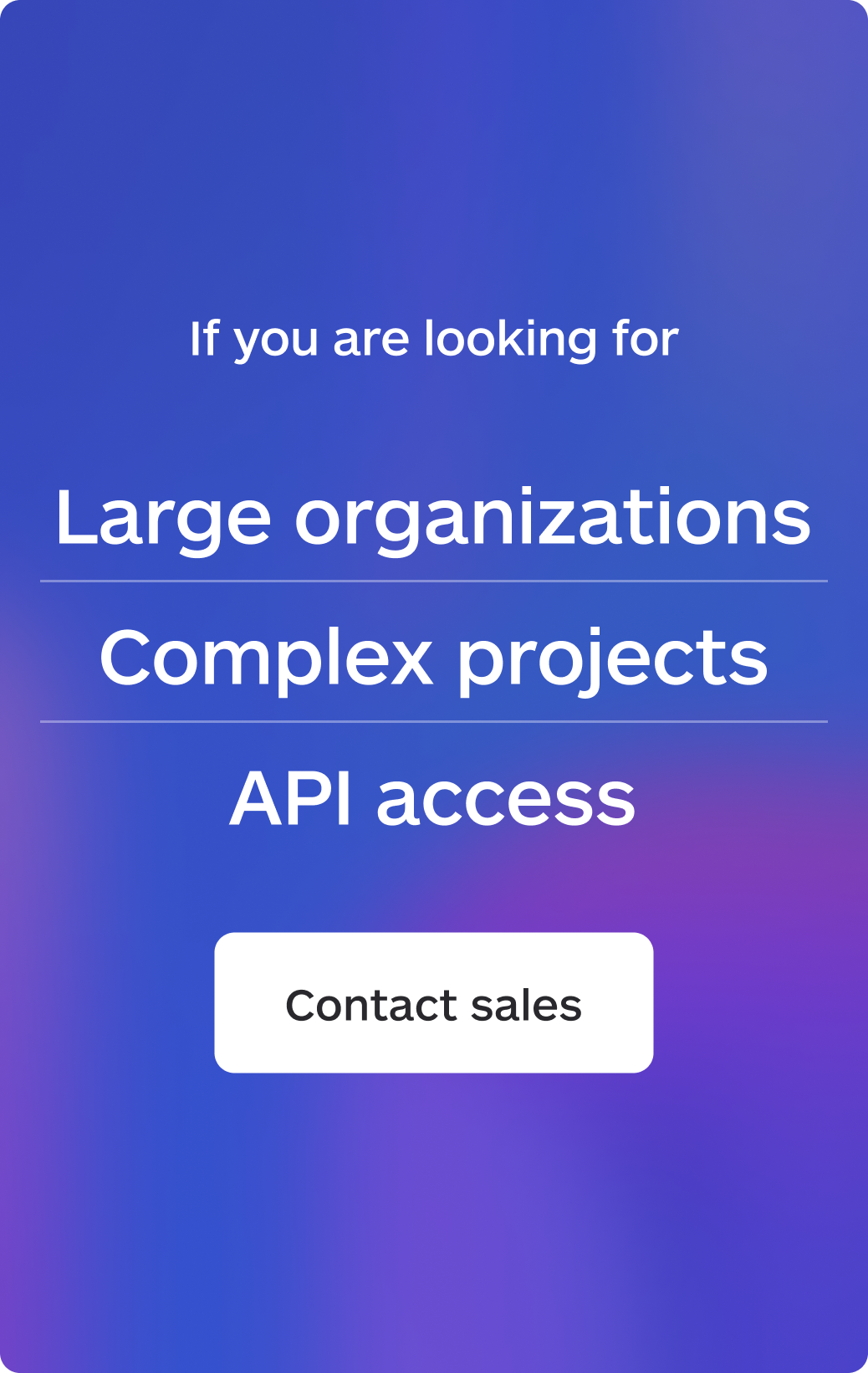Making website localization work for your business opens doors to new markets and customers worldwide. But effective expansion requires more than translation. Website localization best practices involve adapting your entire digital presence to resonate with each target market, from language and cultural nuances to technical infrastructure and user experience.
This practical guide walks you through proven strategies to adapt content, UX, and technical layers for each locale. Whether you’re planning your first international launch or refining an existing localization strategy, these insights will help you build meaningful connections with global audiences while maintaining brand consistency.
TL;DR
|
Website Localization Best Practices: A Practical Guide for Business (2025)
Recent studies indicate that 72.4% of consumers would be more likely to buy a product with information in their own language (source: IMARC Group, 2024). This preference directly impacts your bottom line, with language barriers representing a significant obstacle to conversion in international markets.

Beyond language, localization addresses the full spectrum of cultural, technical, and legal differences between markets. Website localization best practices demonstrate respect for your audience’s culture and builds trust that generic translated content simply cannot achieve. Companies that invest in comprehensive localization typically see higher engagement rates, improved conversion metrics, and stronger brand perception in international markets.
The digital landscape increasingly rewards businesses that speak directly to local audiences. When you understand the difference between locale and language, you can create experiences that feel native rather than foreign, turning international visitors into loyal customers.
Planning your website localization strategy
Strategic planning forms the foundation of successful website localization. Before diving into translation work, establish clear objectives that align with your broader business goals.
Start by identifying your priority markets through data analysis. Review your current analytics to understand where traffic already originates and where demand exists for your products or services. Consider factors beyond population size including market growth rates, competition levels, purchasing power, regulatory environment, and total cost of market entry.
Define measurable success metrics for each locale. Common KPIs include localized traffic growth, conversion rates by market, lead generation numbers, customer acquisition costs, and support ticket reduction. These metrics provide concrete benchmarks to evaluate your localization ROI.
Budget allocation requires balancing multiple cost factors. Consider translation and linguistic quality assurance expenses, technical implementation costs, ongoing content management needs, and resources for continuous optimization. Companies that achieve the highest returns treat localization as an integral part of their content creation workflow rather than an afterthought.
Your planning should also account for timeline considerations. Prioritize high-impact markets for initial launches, then expand systematically based on performance data. This phased approach allows you to refine processes and learn from early implementations before scaling to additional locales.
Try Lara Translate for continuous localization ⬇️
Building a multilingual website checklist: technical foundations
Technical preparation, known as internationalization (i18n), enables your website to support multiple languages without requiring code restructuring for each new locale. This foundational work prevents costly rework and enables smoother localization workflows. Essential technical elements include:
Character encoding: implement UTF-8 encoding across your entire site to properly display special characters, diacritical marks, and non-Latin scripts. This single decision prevents countless formatting issues down the line.
Flexible layouts: design templates that accommodate text expansion. Languages like German and French often require considerably more space than English, while languages like Japanese may need different vertical spacing considerations. Your design system should handle these variations gracefully without breaking layouts or truncating content.
Locale-specific formatting: separate formatting logic from content so dates, times, currencies, numbers, addresses, and phone numbers automatically adapt to local conventions. A date displayed as 10/08/2025 means October 8 in the US but August 10 in most of Europe.
URL structure: establish a clear, scalable URL architecture for language versions. Common approaches include subdirectories (example.com/fr/), subdomains (fr.example.com), or country-code top-level domains (example.fr). Each method has SEO implications worth evaluating with your technical team.
Right-to-left support: for languages like Arabic and Hebrew, ensure your CSS and layout logic properly support RTL text direction without manual intervention for each page.
String externalization: separate all user-facing text from your codebase into resource files. This separation allows translators to work independently of developers and enables dynamic content loading based on user language preferences.
These technical preparations might seem demanding upfront, but they dramatically reduce long-term costs and enable your team to add new languages efficiently as your global presence expands.
How to localize a website: step-by-step implementation
Successful localization follows a structured process that balances quality, efficiency, and scalability. Here’s a proven workflow that companies use to launch effectively.
Content audit and prioritization: not all content requires equal localization effort. Start by cataloging your entire site, then prioritize based on impact. Homepage, core product pages, and conversion-critical paths deserve premium translation quality. Less critical sections like archives might function well with machine translation plus light post-editing.
Linguistic asset creation: develop comprehensive glossaries and style guides before translation begins. These resources ensure consistency across all localized content and speed up the translation process significantly. Include approved terminology for products, features, brand voice characteristics, and examples of desired tone.
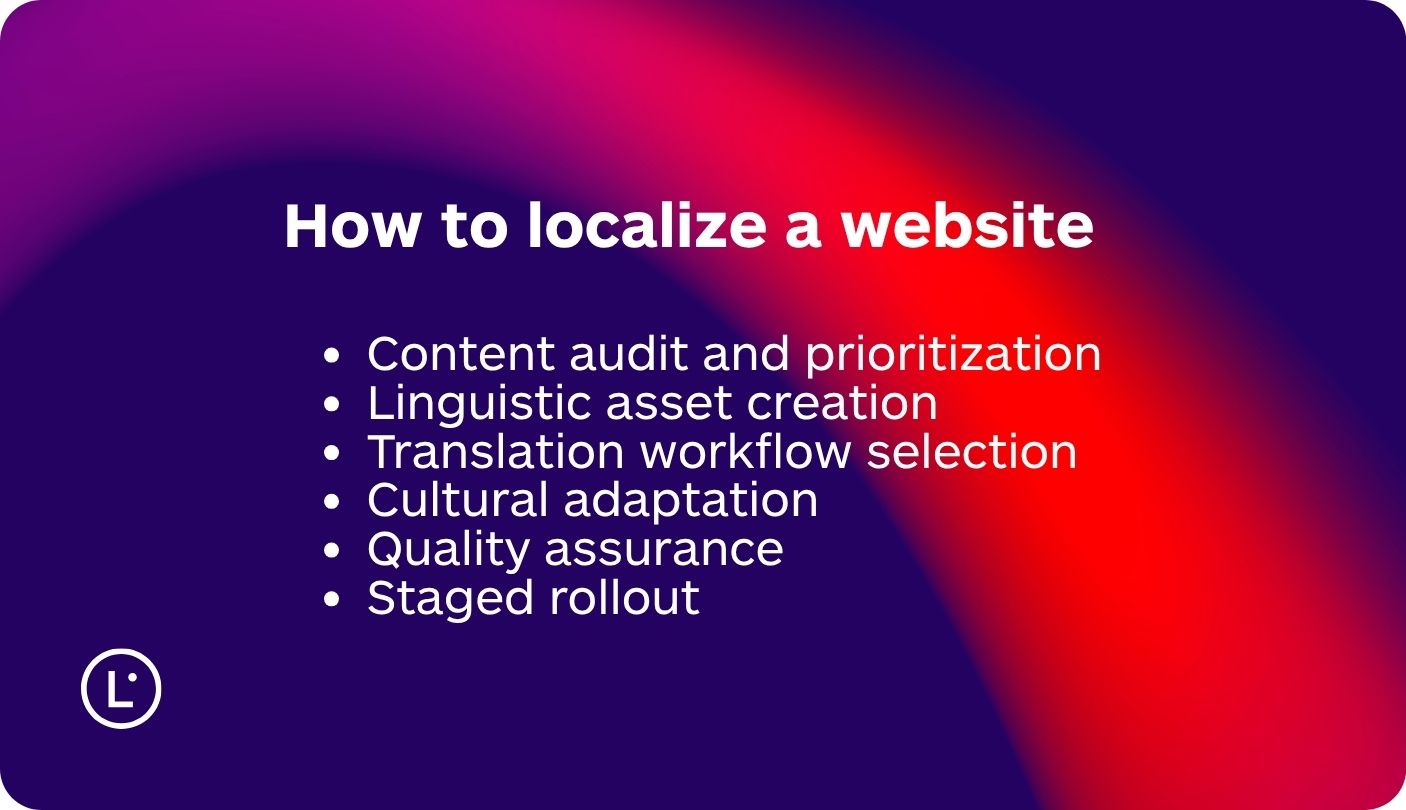
Translation workflow selection: match your translation approach to content type and quality requirements. Marketing copy and legal content typically require human translation for nuance and accuracy. Product descriptions and support documentation often work well with hybrid approaches that combine AI translation with human review. The key is matching methodology to content criticality.
Cultural adaptation: beyond linguistic translation, adapt visual elements to local preferences. This includes selecting culturally appropriate imagery, adjusting color schemes where needed, modifying examples and references for local relevance, and ensuring calls-to-action resonate with local communication styles.
Quality assurance: implement multi-stage review processes including linguistic accuracy checks, functional testing across devices, layout verification to catch truncation or overflow, and compliance validation for local regulations.
Staged rollout: launch localized content progressively rather than all at once. Begin with a pilot market to identify issues, gather user feedback, and refine processes before scaling to additional regions. This measured approach reduces risk and improves outcomes.
Localizing user experience and interface elements
True localization extends throughout the entire user journey, not just translated text. The most successful implementations optimize every interaction point for local expectations.
Form design requires particular attention. Input fields should accommodate local address formats, postal code variations, phone number conventions, and relevant identity document types. A form requesting a ZIP code makes no sense to users in countries that use different postal systems.
Payment processing represents a critical conversion point where localization directly impacts revenue. Offer locally preferred payment methods like Bancontact in Belgium, iDEAL in the Netherlands, or UPI in India. Display prices in local currency with appropriate formatting and consider local purchase behaviors such as preference for installment payments in certain markets.
Navigation and information architecture may need adjustment based on cultural expectations. Some cultures prefer detailed, information-rich pages while others favor minimalist designs. User research in target markets reveals these preferences and guides design decisions.
Performance optimization takes on new importance for international audiences. Users in regions with slower internet speeds or mobile-first browsing patterns require lighter page weights and progressive loading strategies to maintain usable experiences.
Error messages, confirmation texts, and system notifications deserve the same localization attention as marketing content. These touchpoints significantly influence user perception of your brand’s professionalism and local market commitment.
Try Lara Translate for continuous localization ⬇️
Multilingual SEO and visibility strategies
Translation alone won’t drive organic traffic to your localized pages. Comprehensive multilingual SEO ensures your content reaches the right audiences through local search engines.
Keyword research by locale: never simply translate keywords from your primary market. Each locale has unique search patterns and terminology. Use native speakers or local SEO specialists to identify how people actually search for your products or services. The term “sneakers” in the US becomes “trainers” in the UK and takes completely different forms in other languages.
Hreflang implementation: these technical tags tell search engines which language version to show users based on their location and language preferences. Proper hreflang implementation prevents duplicate content penalties and ensures users land on the appropriate version of your site.
Localized metadata: translate and optimize title tags, meta descriptions, header tags, and image alt text for each locale. These elements significantly influence both search rankings and click-through rates from search results pages.
Local link building: search engines use inbound links as trust signals. Develop relationships with local publishers, bloggers, and industry sites in each target market. Local backlinks carry more weight than generic international ones for local search rankings.
Technical SEO maintenance: monitor crawl errors, ensure proper sitemap submission for all language versions, maintain consistent internal linking structures, and regularly audit for broken links or indexing issues across all locales.
Search algorithms increasingly prioritize user experience signals, making performance, mobile optimization, and engagement metrics critical components of your multilingual SEO strategy.
How Lara Translate powers professional website localization
Lara Translate represents a specialized approach to AI-powered translation technology, specifically designed for businesses requiring both speed and professional-quality output. Unlike general-purpose translation tools, Lara was trained on 25 million real-world translations performed by professional translators, creating a unique understanding of how expert linguists approach complex challenges.
The platform’s Trust Attention technology ranks source data based on reliability, ensuring translations draw from the highest-quality examples. This methodology consistently delivers output that approaches professional translator quality while maintaining the efficiency advantages of AI. For website localization projects where accuracy and cultural appropriateness are non-negotiable, this balance proves particularly valuable.

What distinguishes Lara Translate is its contextual understanding that adapts to specific industries and use cases. The platform’s ability to explain translation choices and leverage context beyond individual sentences helps maintain accuracy and consistency in business content. This capability addresses one of the most common challenges in website localization: maintaining coherent terminology and brand voice across hundreds or thousands of pages.
The platform supports a growing list of languages (check the current language list for updates), with performance optimized for business and technical content. Translation speeds reportedly reach completion in approximately 1.2 seconds for standard text segments, supporting efficient workflows for businesses requiring fast translation turnaround.
For teams managing ongoing website localization, adopting continuous localization models ensures translations keep pace with content updates without becoming bottlenecks. This modern approach supports websites that constantly evolve, allowing businesses to maintain multilingual content efficiently as their digital presence grows.
It’s important to recognize that while AI translation technology has advanced significantly, human expertise remains essential for website localization success. The most effective strategies combine AI capabilities for efficiency with human skills for cultural adaptation, creative content, and quality assurance. This hybrid approach allows businesses to scale their localization efforts while maintaining the quality standards that build trust in international markets.
Managing translation workflows and team collaboration
Efficient workflows and clear responsibilities prevent the chaos that often accompanies localization projects. Successful teams implement structured processes that keep everyone aligned.
Translation management systems (TMS) serve as the central hub for localization work. These platforms enable centralized glossary and style guide access, translation memory to ensure consistency, automated workflow routing, in-context translation tools, and collaborative review processes. When selecting a TMS, prioritize integration capabilities with your existing content management system to enable automated content synchronization.
Role definition: clear ownership prevents critical tasks from falling through cracks. Typical localization teams include project managers who coordinate timelines and stakeholders, developers handling technical implementation, in-country reviewers validating linguistic and cultural appropriateness, SEO specialists optimizing for local search, and designers adapting layouts and visual elements.
Content update processes: websites constantly evolve, requiring systems to keep localized versions synchronized. Establish triggers for retranslation when source content changes significantly, processes for expedited updates to critical pages, and regular review cycles for evergreen content to ensure ongoing relevance.
Quality standards: document your quality requirements explicitly including acceptable error rates by content type, turnaround time expectations for different project sizes, required review stages before publication, and escalation procedures for quality concerns.
Clear documentation of these processes accelerates onboarding for new team members and ensures consistent output quality as your localization program scales.
Testing and quality assurance for localized websites
Comprehensive testing catches issues before they impact user experience or damage your brand reputation in new markets. Effective QA encompasses both linguistic and functional dimensions.
Linguistic testing verifies accuracy of translation, adherence to glossary and style guides, cultural appropriateness of content and imagery, proper formatting of locale-specific elements, and consistency across the entire site. Native speakers from target markets should perform final linguistic reviews, as even professional translators may miss subtle regional variations or evolving colloquialisms.
Functional testing ensures technical elements work correctly including form submission and validation, payment processing for local methods, currency conversion accuracy, proper link functionality across language versions, and responsive behavior across device types.
Visual testing catches layout issues that often emerge in localization including text overflow or truncation, improper text wrapping, alignment issues with RTL languages, image and icon appropriateness, and overall visual hierarchy preservation.
Performance testing becomes particularly important for international audiences who may access your site over slower connections or from regions distant from your server infrastructure. Test page load times, mobile performance, and progressive rendering to ensure acceptable experiences regardless of user location.
Document all issues systematically, prioritize based on impact, and retest after fixes to ensure resolution. Comprehensive testing before launch prevents embarrassing errors and demonstrates respect for your new market audiences.
Try Lara Translate for continuous localization ⬇️
Continuous optimization and performance monitoring
Website localization isn’t a one-time project but an ongoing process requiring regular attention and refinement. Markets evolve, languages change, and user expectations shift over time.
Metrics tracking: monitor key performance indicators specific to each locale including traffic levels and sources, bounce rates by landing page, conversion rates throughout the funnel, engagement metrics like time on site, and support ticket volumes and common issues.
A/B testing: continuously experiment with variations in messaging and tone, call-to-action phrasing and placement, visual elements and cultural references, and navigation patterns to optimize for local preferences.
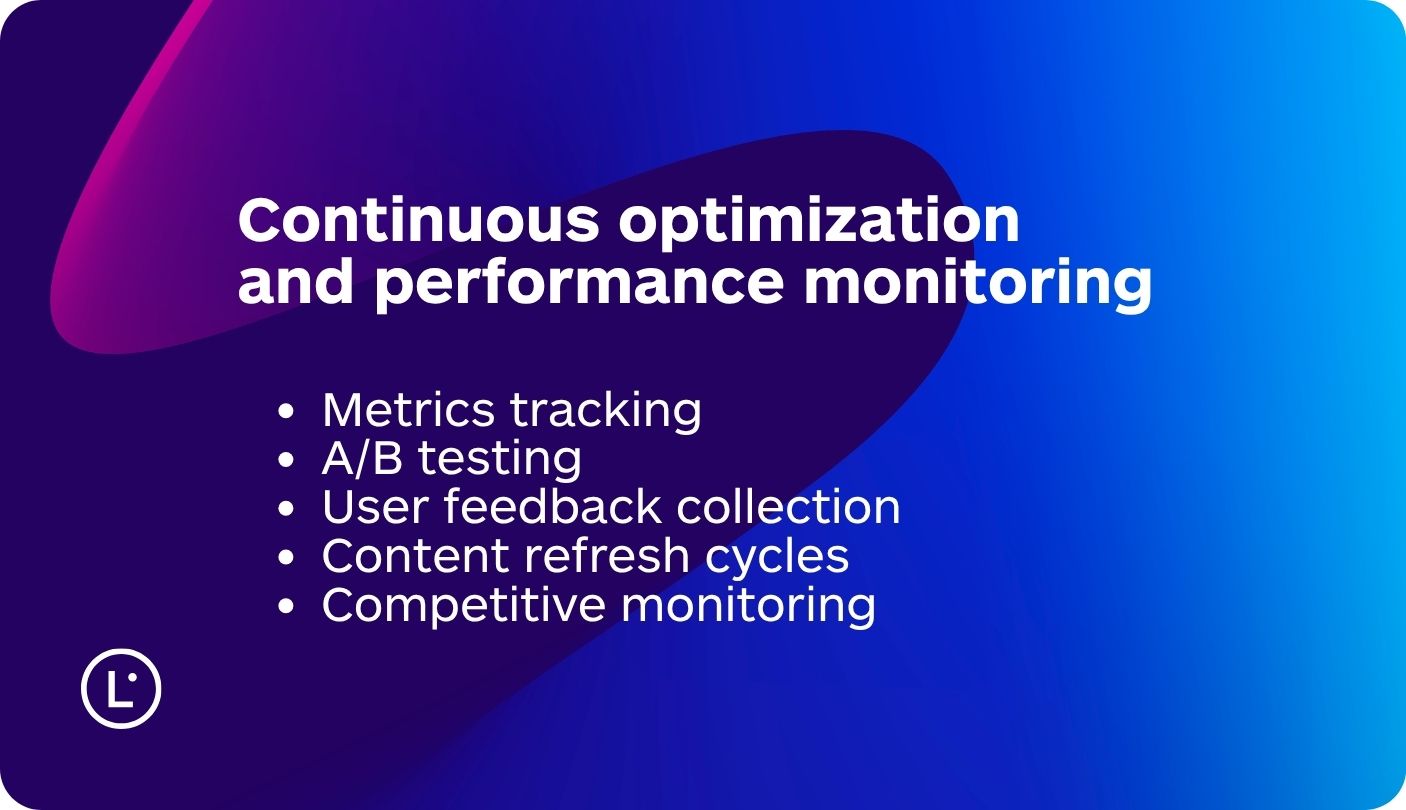
User feedback collection: implement systems to gather direct input from international users through in-app feedback tools, customer support analysis, user testing sessions in target markets, and review monitoring on local platforms.
Content refresh cycles: plan regular reviews of localized content to ensure ongoing relevance including updating examples and references, refreshing seasonal or time-sensitive content, incorporating new brand messaging consistently, and adapting to local market changes.
Competitive monitoring: track how competitors approach each market including messaging strategies, feature prioritization, partnership approaches, and local market positioning.
The most successful global websites treat localization as a core competency requiring ongoing investment and attention. Companies that embrace this mindset gain sustainable advantages in international markets, building relationships that translate into long-term customer loyalty and business growth.
Making website localization work for your business
Effective website localization opens markets and creates opportunities that remain inaccessible to businesses relying solely on single-language presence. While the process requires thoughtful planning, technical preparation, and ongoing commitment, the returns justify the investment for companies serious about international expansion.
Start with clear objectives aligned to business goals, build solid technical foundations through proper internationalization, invest in quality linguistic assets and workflows, adapt the complete user experience rather than just words, and maintain focus on continuous improvement based on data.
The most important element? Approaching localization with genuine respect for your international audiences. When you demonstrate commitment to speaking their language and understanding their needs, you build trust that transcends borders and creates lasting business relationships.
Whether you’re launching your first localized site or scaling to additional markets, these website localization best practices provide a roadmap for success. The businesses that master localization today position themselves as truly global companies ready to serve customers wherever they may be.
FAQs
What is the difference between translation and localization?
Translation converts text from one language to another, while localization adapts the entire experience for a specific locale. Localization includes translation but extends to cultural adaptation, formatting conventions, visual elements, and user experience adjustments. A properly localized website feels as if it was built specifically for that market, not merely translated from elsewhere.
How much does website localization typically cost?
Costs vary significantly based on website size, number of languages, content complexity, and quality requirements. Factors include translation fees (typically per word), technical implementation costs, ongoing maintenance expenses, and quality assurance investment. Many companies find that starting with 2-3 priority markets and scaling progressively provides the best balance of investment and returns.
How long does it take to localize a website?
Timeline depends on site complexity and scope. According to website localization best practices, a basic marketing site might localize in 4-6 weeks, while complex e-commerce platforms could require 3-6 months for initial launch. Proper internationalization preparation significantly reduces this timeline. Many businesses adopt continuous localization models where new content is translated automatically rather than in large batch projects.
Should I use machine translation or human translators?
The optimal approach typically combines both. Machine translation with human post-editing works well for high-volume, straightforward content. Human translation suits marketing copy, legal content, and culturally sensitive materials. Working with a language service provider experienced in AI-powered workflows helps determine the right mix for your specific content types and quality requirements.
How do I maintain localized content as my website evolves?
Implement a translation management system that integrates with your content management platform. This enables automated workflows where content updates trigger translation tasks, maintaining synchronization across language versions. Establish clear processes defining what content changes require retranslation versus minor updates and setting priority levels for different content types.
This article is about
- Website localization best practices for businesses expanding into international markets with practical strategies for planning, implementation, and optimization
- How to localize a website through step-by-step processes covering technical preparation, content adaptation, and user experience optimization
- Creating a multilingual website checklist addressing internationalization, cultural adaptation, SEO requirements, and quality assurance
- Strategic approaches to website localization that balance translation quality, efficiency, and scalability across multiple markets
- The role of AI-powered translation technology like Lara Translate in enabling professional-quality localization while maintaining speed and consistency
Have a valuable tool, resource, or insight that could enhance one of our articles? Submit your suggestion
Useful articles
- Best business tools 2025: our complete guide to powering your growth
-
Best language service providers in 2025: your guide to global expansion
